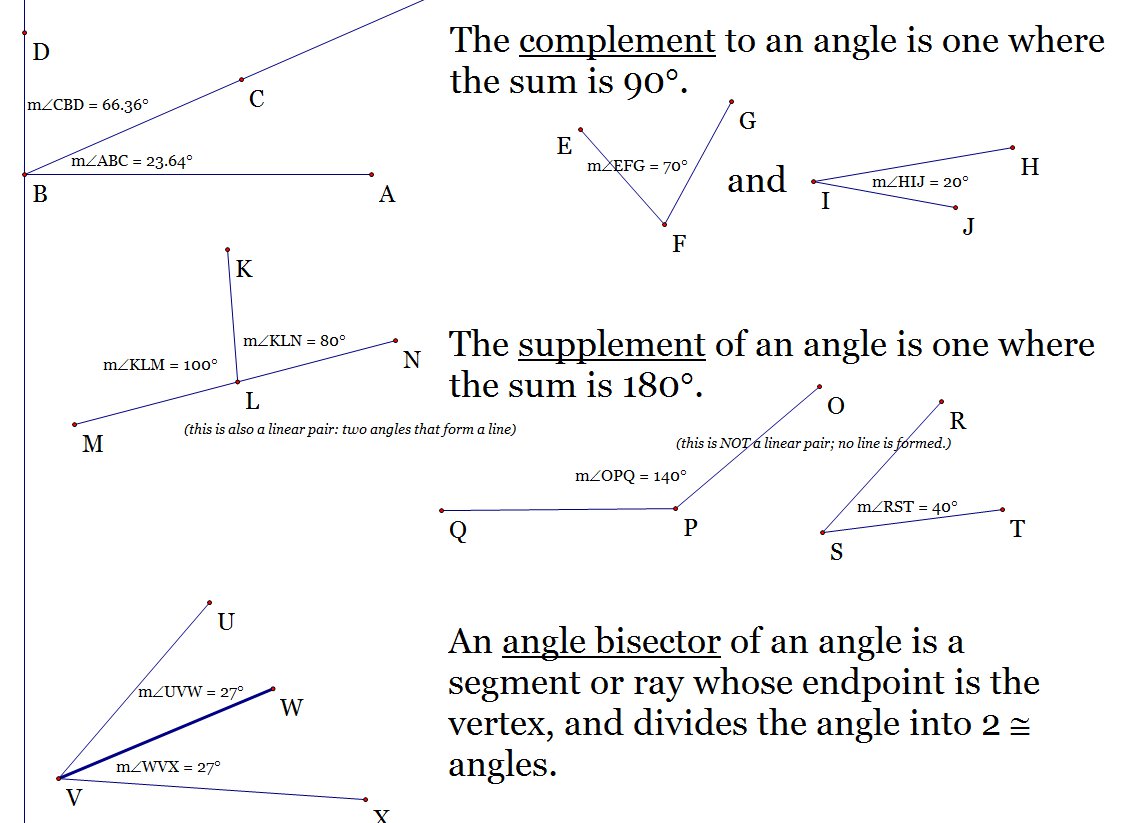With all the new technology in the classroom (see this post), I’ve been interested in trying out the new toys. One of those toys is the 25 laptops (dell inspiron 11z, small and cheap) which are loaded up with some great software.
For the Intro to Geometry unit, we go through the definitions, symbols, and nomenclature for how to represent objects in Geometry. They all know what it means “to cut an angle in half” from middle school, but our concept of an angle bisector is more detailed and nuanced. I used to do this lesson with pencil and paper in a very traditional way, but to change it up we did the entire set of notes in Geometer’s Sketchpad (not Geogebra because I haven’t had time to learn efficient use of it). A page of notes looked like the following:
Why?
As I can see it, there are two benefits of doing the notes this way:
- The dynamic nature of sketchpad is nice for the students building an intuition of how geometry works. Does the angle bisector always stay inside the angle? Do midpoints move if the segment changes? Etc. Obvious answers to math teachers, but these concepts are not hard-wired into the average 10th grader.
- It’s an excellent intro to how to use sketchpad. They practice just about all the skills necessary to quickly research a topic with this software. I could now have them create a triangle and see if the centroid is always inside the triangle. I could ask them to find the sum of all the exterior angles in a pentagon. I hope that they have gained a knowledge of how to construct and measure with sketchpad.
Disadvantages:
- It was a battle between going fast enough to keep the quickest students engaged, and not losing the slower process students. I ended up going at a good pace, and buy prednisolone eye drops telling the students to just keep up with me, even if you can’t type everything in yourself. Some of the students still can’t touch type (!), so that was a disability for them. At the end I passed out a printed packet of the finished product, so they had a full set of notes. This also stunk because I think it would be cool for them to just print theirs out, but that would have required 3x the amount of paper and 100x the amount of hassle.
Overall I am still battling myself to find a proper mix of and old-school thought of “Get the Math done!” to the new-school techie thought of “Gee-Whiz that’s cool”.
Have any of you tried such a technique? Where have you done this differently?
p.s. As usual, in education, the problem is tremendously difficult, there is no easy way of measurement, and no clear solution. I like this job.

